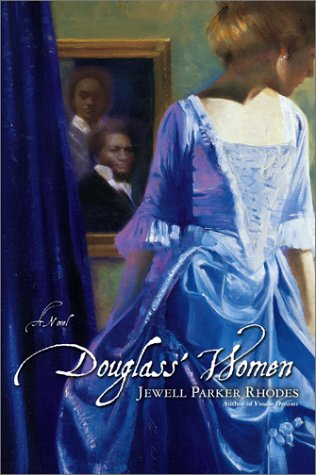Douglass’ Women
Writing about an historical figure and compelling writer is a challenge, but author Rhodes, who depicted Marie Laveau in Voodoo Dreams, makes it look easy. Anna is a hard-working free woman in Baltimore. In 1841 she meets Frederick, an embattled slave at the shipyard. “His hair made me think of Samson.” She ponders Delilah’s betrayal and decides, “Love be true.” She helps Frederick escape to New York. He sends for her and they travel to New Bedford, to an abolitionist’s refuge. Detail brings immediacy to the moment: “There was a fireplace bright against the fall chill, and tallow? no, beeswax candles brightly flaming on the mantel and dresser.”
When Frederick speaks in Nantucket, she sees him in his glory: “Great Samson man, his hands on the pillars of slavery.” At the reception he meets Ottilie Assing, a German intellectual who represents the class and beauty Anna feels she lacks. Ottilie feels at ease with the public Douglass, while Anna longs to keep him private. Changing to Ottilie’s viewpoint, Rhodes brings her impressionist style to the life of German-Jewish liberals in Hamburg. Ottilie’s father works as a doctor and plays Beethoven; her mother paints. They leave her an heiress and she travels to America “completely in awe of the miles of deep, blue sea with white-tipped waves.” An incident on shipboard teaches her what lurks in the depths.
In New Bedford she goes to work for William Lloyd Garrison on his newspaper and is captivated by the looks and eloquence of Frederick Douglass. His fame causes conflict with Anna, as he becomes concerned about his public image. Rhodes shows insight into a three-way relationship, both women dissatisfied by the ego of a star. One half has the formula: Love be true. And the other, the other half: Love is free.










